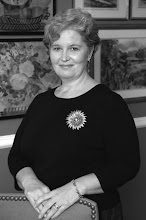
For many graduate students, a post-doctoral research position can be seen as a “fresh start”. It’s a great opportunity for you to break away from the research you’ve been entrenched in for the past five years, learning new skills and working in areas that you’re unaccustomed to. Finding funding to support these new interests, however, can be a bit of a challenge, and while it isn’t necessary for you to walk out of grad school with some sort of fellowship under your belt, it certainly doesn’t hurt, either.
This was the situation I was in when I was finishing my Ph.D. I had spent years doing basic science research in the functional neuroimaging of complex hand behavior. I wanted to branch into translational neuroscience, applying what I had learned during my graduate training to clinical work. I had some good ideas and the green light from my post-doctoral advisor, so I began applying to your standard course of fellowship opportunities: an NRSA through the NIH and a couple of private institutions. One of those private institutions was the Dystonia Medical Research Foundation, whom I happened across at their booth for the Society for Neuroscience (SFN) meeting earlier that year. For my post-doc, I was eager to do work with patients who suffer from task-specific focal hand dystonia (FHDtsp), a debilitating movement disorder that can often bring an early end to a professional performance career. Many of my other fellowship proposals were centered on working with this population, so applying for a post-doctoral fellowship from the DMRF made perfect sense.
An advisor in grad school once told me that the grant application process can be an “exercise in rejection”, and it seemed to me that my experience was no exception. I was especially disheartened the day I learned that my NRSA did not get funded and decided to leave my future advisor a message on his machine to break the bad news. However, no more than thirty minutes later, I received a phone message from a science officer at the DMRF. I called him back immediately, and he offered his congratulations, saying that the Foundation had reviewed my application and was happy to support my project. You can imagine my advisor’s surprise when I called him back and told him not to worry about my previous message. I have to admit--as much as an “exercise in rejection” the process can be, it can also be a bit of an emotional rollercoaster.
Needless to say, the whole situation could not have turned out any better. Support from the DMRF has been far more than just two years of research funding. The Foundation does an exhaustive job of training post-doctoral fellows and preparing them for future careers in academia. The DMRF plays an active role in dystonia research, and has a strong presence at many scientific meetings (including SFN). Through the DMRF, I have been able to meet and network with other leading investigators in the field. In addition, the DMRF is responsible for organizing events where other scientists collaborate to advance the field of dystonia research. As I neared the end of my support period with the DMRF, they were encouraging and helpful as I applied for extramural funding. On top of all of this, the DMRF provides a substantial amount of outreach and health information to the dystonia community. It has been an inspiring experience and an honor to work with them.
I strongly encourage anyone interested in dystonia research to look into a Post-Doctoral fellowship from the DMRF. I’m hoping that someday you’ll get the same phone call.
Leighton Hinkley, PhD
Postdoctoral Fellow
University of California, San Francisco






No comments:
Post a Comment